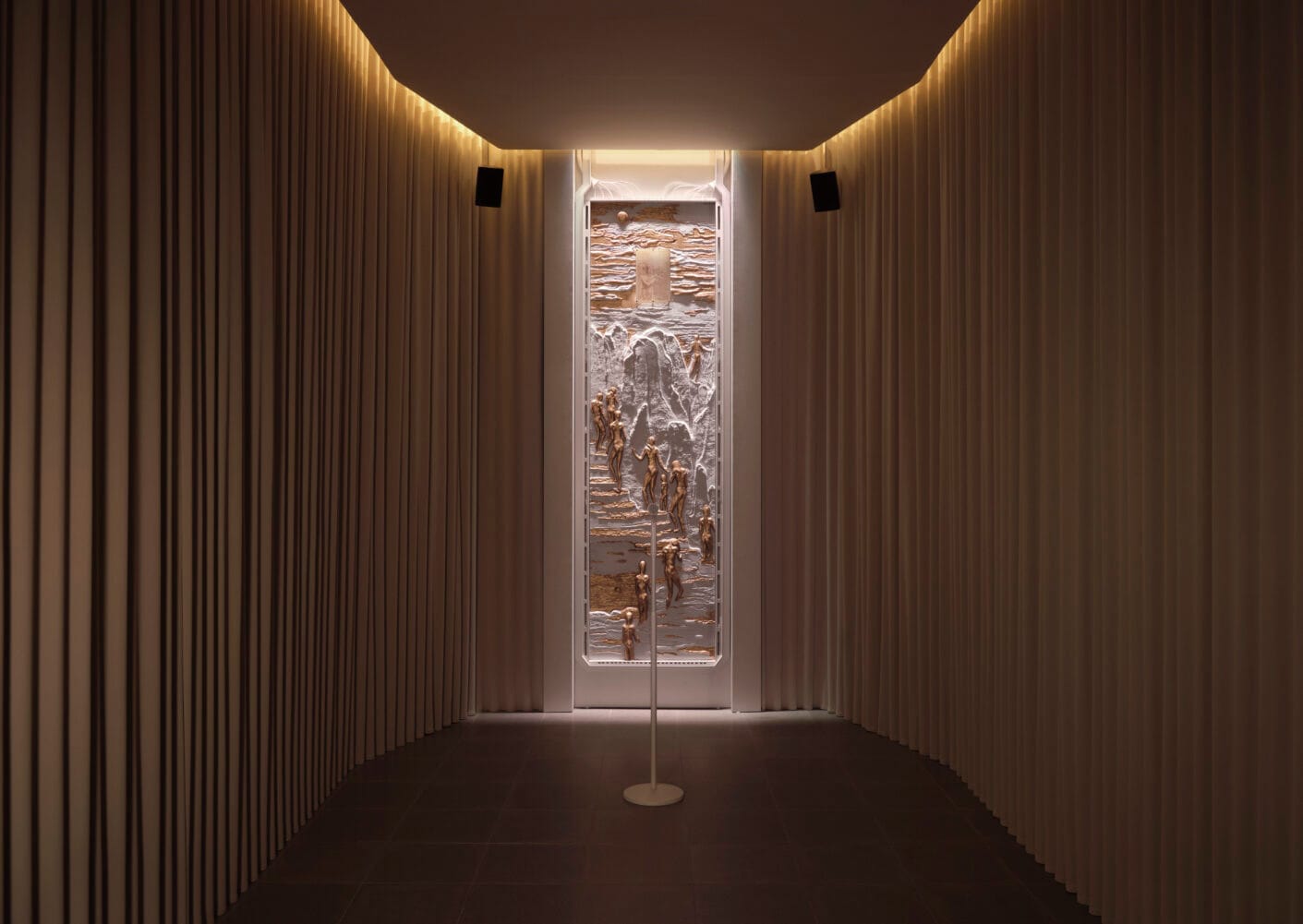In a small chapel-like space at the Serpentine North Gallery in London, the voices of fifteen choirs from across the UK converge, intertwining to form something altogether unexpected: a collective artwork co-created with artificial intelligence. This is not just an exhibition but a bold reimagining of how we create, train, and perceive the role of AI in artistic expression. The installation, titled The Call, marks the first UK solo exhibition of Berlin-based artists Holly Herndon and Mat Dryhurst, who are among the leading voices pushing the boundaries of what AI can be in the arts.
Opening on October 4, 2024, and running until February 2, 2025, The Call invites audiences to step inside an immersive spatial audio environment that challenges preconceptions about the role of technology in human creativity. For Herndon and Dryhurst, the AI is not merely a tool for generating art; it’s a medium of coordination and communication—much like singing has been for humanity across millennia.

Singing As the First “Coordination Technology”
Since the dawn of civilization, the act of singing has served as a ritual of communication, an art form that enables groups of people to synchronize their thoughts, actions, and emotions. Techniques like call-and-response became the bedrock of community-building and the development of social structures. In many ways, the artists argue, AI has the potential to become an extension of these same rituals, transforming individual expressions into a harmonious collective whole.
“If all media is training data, including art, let’s turn the production of training data into art instead,” the duo declares, redefining what it means to create in a time when technology has infiltrated every aspect of our lives.
The idea that AI could serve as a new type of coordination technology is the heartbeat of The Call. By training their AI models with vocal data sourced from diverse choirs, Herndon and Dryhurst aim to spotlight the nuanced layers of human and machine collaboration. The project began with a songbook of hymnals and exercises crafted by the artists, which served as the basis for their choral datasets. They traveled the length and breadth of the UK, recording the voices of choirs from Belfast to Bristol, Leeds to Beith, gathering vocal samples that now form the backbone of a new kind of machine learning model—one designed not to replace, but to enhance human creativity.

Building a New Framework for AI and Art
At its core, The Call asks: What happens when the creation of training data itself is seen as an artistic practice? The answer, according to the artists, lies in the development of new protocols and governance frameworks that allow the contributors—those who lend their voices to the training data—to retain some level of power and agency over how their data is used.
To this end, the project has established a pioneering Data Trust, an experimental structure that empowers the choirs involved in the project to have a say in how the resulting AI models are deployed. This collaborative approach ensures that the communities contributing to the AI’s training are not simply passive participants but active stakeholders in the creation process.
“This is about rethinking the balance of power between those who contribute data and those who use it,” says Herndon. “It’s a step towards a more ethical and equitable way of building technology.”

A New Form of Vocal Architecture
Walking into the exhibition space, visitors are greeted by a multi-channel audio installation that brings the AI models to life. The soundscapes are orchestrated to reverberate within the chapel-like environment, enveloping the audience in a rich tapestry of human and machine voices. It’s as if the walls themselves are singing, breathing life into the space in a way that blurs the line between the physical and digital realms.
The architecture of the installation—co-designed with the innovative architecture studio sub—was conceived as a modern-day ritual space, a venue where technology and tradition merge to create a new form of vocal architecture. Visitors are encouraged to engage with the installation interactively, their own voices activating the AI models, becoming entangled with the larger composition of sound.
In the dimly lit gallery, the resonance of voices—both human and machine—serves as a reminder that we are at the cusp of a new era, one where the digital and physical worlds coalesce in ways that expand our understanding of art, creativity, and the nature of collective expression.

A Blueprint for AI Ethics and Collaboration
The exhibition is also a call to action for the cultural and technical frameworks necessary to support ethical AI development. Herndon and Dryhurst’s project, backed by Serpentine Arts Technologies, serves as a template for how cultural institutions can engage with complex AI systems, championing the artists who interrogate and experiment with these technologies. By integrating voices from different communities and establishing new governance models, The Call proposes an inclusive path forward for the use of AI in creative industries.
The implications of The Call extend far beyond the exhibition itself. As AI technology becomes more deeply woven into the fabric of our lives, the methods established here could set a precedent for how artistic communities around the world approach AI training, authorship, and ownership in the future. It’s a testament to the evolving nature of human creativity in the 21st century—a future where AI is not just a tool, but a participant in the grand chorus of human artistic expression.





Member comments